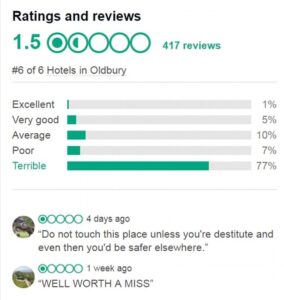
How hotels can protect their brand in the new-build market
In recent years, it’s become more common for hotel developers to take care of the entire design and construction process.
[pro_ad_display_adzone id=”15046″ align=”left”]In addition to creating the physical building, they’re deciding on the decor, and choosing every item in the guestroom – from the chairs and crockery to the bed linens, kettle, and alarm clock.The hotel gets handed a property that is ‘good to go’. When done well, this process works just fine. But often, hoteliers don’t get what they really want. Problems arise later down the line and guests don’t receive the intended experience.
So how and why do things go wrong?
Understanding the hotel experience
So when they make final decisions on small items, they’re not necessarily thinking about the impact on the hotel “experience”.
For instance, if the design specification says “provide a kettle”, the D&C company might just buy a kettle from Kmart for $10, because it’s the cheapest and easiest option. Of course, these minor purchases say a lot about the hotel.

Other unique considerations can easily be missed. For instance, a quality clock with single-day alarm is important in a hotel to ensure a guest isn’t woken by an alarm set by the previous occupant.
Then there are decisions to make about appropriate lighting, in-room entertainment, desks, mirrors, and the list goes on.
The solution is simple but requires effort: hoteliers need to take control and own the entire design process.
Impressions count
What does it say about your hotel brand when guests find a $10 kettle in their room? It’s not exactly a statement of quality. Even for a guest staying at a budget property, a room with the most basic amenities sends out a clear message: this is the kind of experience we think you deserve.
Quite rightly, a guest may feel underwhelmed, certainly undervalued, and will probably never book again. Some may vent their disappointment on TripAdvisor and deal your reputation a heavy blow.

Given that this outcome is bad for all concerned, what specific steps can hoteliers take to raise the benchmark for the design and decor of a new-build property?
Become a guest advocate
Instead of seeing things from your perspective as a hotelier, walk through your hotel as a guest. Consider the key items that they’ll see, touch, and interact with — from the flat-screen TV, couch, and artwork, to the crockery, phone, and bed linens. How should those items look, feel, and function? Translate these thoughts into a working brief.
In addition to the decor and amenities, try to describe the feeling you want to create. Are you striving for “old-world luxury”, “bold and modern”, “laid-back and comfortable”? Being a guest advocate means setting the standard for the mood and experience you want for your customers.
Be meticulous about who you hire
Really dig into the credentials of the D&C company you hire. Most obviously, ask them about any past hospitality projects they have worked on. Get a sense of whether they really understand how to create a great guest experience. If possible, inspect their past projects on an in-person visit. Otherwise, reach out to one of their former hospitality clients for an honest assessment on the end result.
Make your brief specific

The devil is in the detail, so make sure your brief is extremely specific. Instead of just listing appliances (e.g. “alarm clock”), explain the functions you need each appliance to fulfil.
For instance, “Guests should be able to stream content to the in-room TV from their phone or tablet. We want to create a seamless experience using a service, such as Roomcast.”
Create a guest persona
You need to make it easy for the D&C company to understand and relate to your guest. One of the best ways to do this is by creating a customer persona. Bring your typical customer to life by mentioning their profession and hobbies. Describe why they travel, who they travel with, and what they love most about your hotel.
Include their most important needs, expectations, and list their favourite in-room extras. Here’s an example:
“Andy is a business traveller who’s willing to spend extra on the finer things in life. He wants a soft bed, blackout blinds to help enjoy a great night’s sleep, and an espresso machine for his morning coffee. He likes using the in-room TV to Skype with his kids and stream his favourite Netflix shows. A quality desk with a dimmer light is a priority so he can work comfortably at night.”
With a clear persona to refer back to, your D&C company can make more informed decisions. For each purchase, they can question whether it aligns with the lifestyle, needs, and values of your target audience.
Mock up room
Ensure the Mock Up Room is a working replica and have yourself and others fully evaluate from a guest experience perspective. Experience and evaluate the room as if you were a guest, often it is a good idea to have someone independent do this as they have no pre-conceived notions about what to expect and why certain decisions and choices were made. If those doing the evaluation and critiquing are close to the project, they may be ‘blinded by familiarity’ so a review and feedback provided by a ‘fresh face’ who understand hotel guests in all their glory can be invaluable and transform a good room to a spectacular room.

Protect your hotel brand in the new build market
The steps described above really come down to education, clarity, and understanding your guests. Talk to the D&C company you’re working with. Outline exactly what you’re looking for with a detailed brief. And explain the overarching experience and brand persona you’re trying to create.
With a great passion for all things hotels, but in particular technology and a desire to help others his role as director at Technology4Hotels allows him to do both. Brendon has worked with hundreds of hotels to help them with their in-room technology. In the last few years he has helped them to increase guest satisfaction, strengthen guest loyalty and encourage repeat bookings as well as win awards such as the best business hotel, best city hotel, best upscale hotel and best luxury hotel in Australasia. Always going the extra mile, Brendon began his hospitality career over twenty five years ago working in 5 star hotels whilst completing his Bachelor of Business in Hotel Management. He has held various management positions within 5 star hotels, worked as a consultant in both hotel feasibility and technology and has an extensive background in hotel technology.







